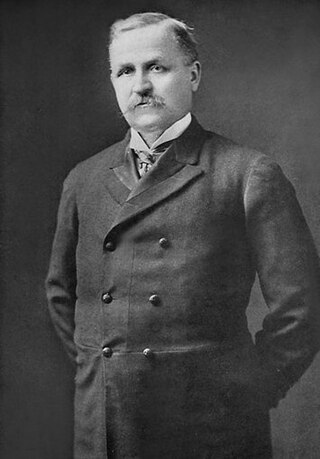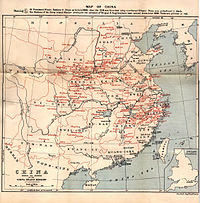History
The Methodist Press in Fuzhou first published a journal called The Missionary Recorder: A Repository of Intelligence from Eastern Missions, and Medium of General Information in 1867, shortly after it became legal for foreigners to live in China and for missionaries to proselytize there. This journal was short-lived, however, lasting only a year. The Methodist Press followed it with the Chinese Recorder and Missionary Journal in 1868. Justus Doolittle, a missionary of the American Board of Commissioners for Foreign Missions, joined the Rev. Stephen Livingstone Baldwin of the American Methodist Episcopal Mission in the editorship, but this journal stopped publication in May 1872 after the publication of Volume 4.
The Presbyterian Press in Shanghai took up bi-monthly publication in January 1874, initiating a sixty-seven year run, becoming monthly in 1886. Alexander Wylie, Agent of the British and Foreign Bible Society, served as editor from 1874 until 1877, upon which Baldwin resumed his helm as editor until 1879. The Rev. Andrew P. Happer assumed the role from 1880 until the decline of his health in 1884. The Rev. Dr. Luther Halsey Gulick Sr. succeeded Happer as editor from 1885 until his own retirement due to health issues in 1889. [2]
Rev. Lucius Nathan Wheeler, who first started the journal under its original name in 1867, served as editor from 1891 until his sudden death in 1893. [3] Rev. G.F. Fitch became editor in 1908 and was joined in April 1911 by the Rev. Nelson Bitton in April 1911 (who served only briefly). [1]
In January 1912 the Rev. Frank J. Rawlinson became first associate editor, then editor in 1913. In the late 1910s, Rawlinson became so involved with theologically liberal causes and support of Chinese nationalism that he was forced to resign from his mission; instead, he joined the more liberal American Board of Commissioners for Foreign Missions. During the 1920s The Chinese Recorder welcomed a wide range of views but was particularly known for its commentaries and translations of Chinese writings. Rawlinson continued until September 1937, when he was killed by a bomb dropped accidentally by a Chinese plane during the Japanese attack on Shanghai. [4] [5]
By 1939 the journal became known as The Chinese Recorder and Educational Review, but ceased publication in December 1941. [1]

John McClintock was an American Methodist Episcopal theologian and educationalist, born in Philadelphia.
Protestant Christianity entered China in the early 19th century, taking root in a significant way during the Qing dynasty. Some historians consider the Taiping Rebellion to have been influenced by Protestant teachings. Since the mid-20th century, there has been an increase in the number of Christian practitioners in China. According to a survey published in 2010 there are approximately 40 million Protestants in China. As of 2019, Fenggang Yang, a sociologist of religion at Purdue University, estimated that there are around 100 million Protestant Christians in China. Other estimates place the number of Protestant Christians at around 40–60 million

The London Magazine is the title of six different publications that have appeared in succession since 1732. All six have focused on the arts, literature and miscellaneous topics.

Isaac William Wiley was an American who distinguished himself as a physician, a Methodist missionary to China, a pastor, as the president of a seminary, as an editor, and as a bishop of the Methodist Episcopal Church, elected in 1872.

In the early 19th century, Western colonial expansion occurred at the same time as an evangelical revival – the Second Great Awakening – throughout the English-speaking world, leading to more overseas missionary activity. The nineteenth century became known as the Great Century of modern religious missions.

Griffith John was a Welsh Christian missionary and translator in China. A member of the Congregational church, he was a pioneer evangelist with the London Missionary Society (LMS), a writer and a translator of the Holy Bible into the Chinese language.
Presbyterian Mission Agency is the ministry and mission agency of the Presbyterian Church (U.S.A.). Founded as the Western Foreign Missionary Society by the Presbyterian Church in the United States of America in 1837, it was involved in sending workers to countries such as China during the late Qing dynasty and to India in the nineteenth century. Also known as the Foreign Missions Board in China, its name was changed by the Old School body during the Old School–New School Controversy to the Presbyterian Board of Foreign Missions.
English Presbyterian Mission was a British Presbyterian missionary society that was involved in sending workers to countries such as China during the late Qing Dynasty.
English Wesleyan Mission was a British Methodist missionary society that was involved in sending workers to countries such as New Zealand in the 19th century and China during the late Qing Dynasty.

Timothy Richard was a Welsh Baptist missionary to China, who influenced the modernisation of China and the rise of the Chinese Republic.
Medical missions in China by Catholic and Protestant physicians and surgeons of the 19th and early 20th centuries laid many foundations for modern medicine in China. Western medical missionaries established the first modern clinics and hospitals, provided the first training for nurses, and opened the first medical schools in China. Work was also done in opposition to the abuse of opium. Medical treatment and care came to many Chinese who were addicted, and eventually public and official opinion was influenced in favor of bringing an end to the destructive trade. By 1901, China was the most popular destination for medical missionaries. The 150 foreign physicians operated 128 hospitals and 245 dispensaries, treating 1.7 million patients. In 1894, male medical missionaries comprised 14 percent of all missionaries; women doctors were four percent. Modern medical education in China started in the early 20th century at hospitals run by international missionaries.
Kathleen L. Lodwick was an American educator and historian of missions to China.

Dyer Ball was an American missionary and medical doctor in China. Born in West Boylston, Massachusetts, Dyer Ball studied at Phillips Academy and at Yale College for two years. He graduated from Union College, New York, in 1826, and then studied Theology at Yale and Andover Theological Seminary. He received his licence to preach in 1828, one year after marrying Lucy Mills. After being ordained in 1831, Dyer Ball became an agent of the American Home Missionary Society in 1833, and settled in Florida, where he taught, among other places, at St. Augustine High School there, and among the local African-American community. Meanwhile, as his appointment to a mission abroad was delayed due to financial circumstances, he also received a medical degree from a medical institution in Charleston, South Carolina, in 1837, and learned Chinese.

William Scott Ament was a missionary to China for the American Board of Commissioners for Foreign Missions (ABCFM) from 1877, and was known as the "Father of Christian Endeavor in China." Ament became prominent as a result of his activism during the Boxer Uprising and controversial in its aftermath because of the personal attacks on him by American writer Mark Twain for his collection of punitive indemnities from northern Chinese villages.

Rev. Stephen Livingstone Baldwin was an American missionary to China by the Methodist Episcopal Church. His ministerial life covered a period of forty-four years, half of which was spent at Fuzhou.
Frank Joseph Rawlinson born in Langham, Rutland, England, was an American Protestant missionary to China from 1902 to 1937 known for his theologically liberal views, openness to Chinese culture, and support for Chinese nationalism. From 1912 to 1937 he was editor of The Chinese Recorder and Missionary Journal, published in Shanghai, the leading English-language journal of the Protestant missionary community.

The China Review: Or, Notes and Queries on the Far East was an academic journal published in Hong Kong from 1872 to 1901 as an outlet for scholarly writings on China written by foreign scholars, mainly those living on the China coast. The journal was edited in its initial years by Nicholas Belfeld Dennys, editor of the China Mail, a Hong Kong newspaper. In the first volume, Dennys stated that the review would include original papers on "the Arts and Sciences, Ethnology, Folklore, Geography, History, Literature, Mythology, Manners and Customs, Natural History, Religion, etc." and would cover "China, Japan, Mongolia, Tibet, The Eastern Archipelago, and the 'Far East' generally." He noted that the purpose was similar to Notes and Queries on China and Japan, which had ceased publication in 1869. The second editor-in-chief was Ernst Johann Eitel, a former missionary of the Basel Mission and the London Missionary Society. The journal was not supported by any church, but missionaries frequently published articles of sinological interest.

Andrew P. Happer (1818–1894) was a nineteenth-century American Presbyterian missionary who is known for his educational, medical, and religious endeavours in South China. Happer's missionary service lasted from 1844 to 1891, and during this time he worked in the suburbs and city of Canton. In the field of medicine, Happer created two dispensaries, the first was established in 1847 and the second in 1854. He also introduced higher Christian education to the Chinese youth of Canton through opening boarding and day schools, a training school, and eventually the Canton Christian College in the year 1888. Carrying out his duty as a Presbyterian missionary, Happer found the First Presbyterian Church where he was a pastor and converted many Cantonese people to Christianity, published books and other works focusing on Presbyterian faith, translated multiple religious works, and held editor positions for Presbyterian periodicals. After making his impact on the Cantonese people and laying down the foundation for future Presbyterian missions in South China, Happer left China for the last time in 1894.

The Protestant mission began in the Chinese province of Sichuan in 1877, when premises were rented by the China Inland Mission in Chungking. However, it grew rather slowly, it was not until the late 1980s that Protestantism experienced rapid growth. The two largest denominations in the province before 1949 were Anglicanism and Methodism.

The West China Missionary News (WCMN) was a monthly news magazine published in Chengdu (Chengtu) from 1899 to 1943 by the West China Missions Advisory Board, and printed by Canadian Methodist Mission Press. It was aimed at Protestant missionaries working in Sichuan, and was the first and longest-running English-language newspaper in that province.














